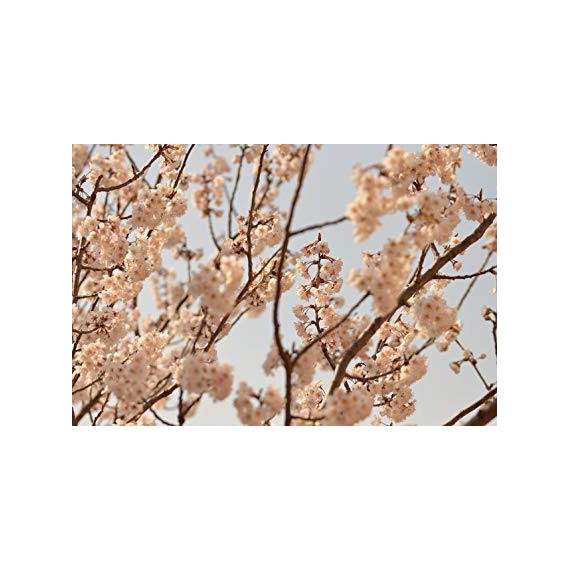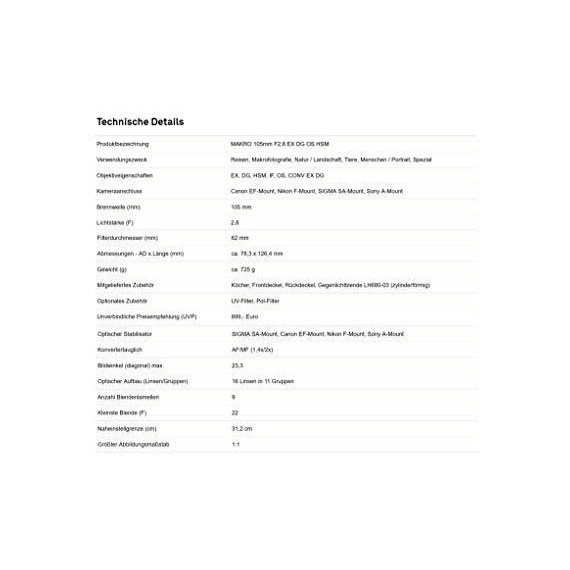Wigged Out Fat Guy
This sigma lens is a great macro lens with one serious flaw that I will discuss in the review. As with all WOFG reviews, I will cover the pros and cons, offer advice for how to use the lens, and also offer suggestions for other lenses at the end and why you might want one or the other. Note - This is a review for the Canon mount of this lens, though most of this will also apply to other brand mounts, as they are for the most part the same lens just with a different mount. Optically and feature wise they will be no different no matter what camera mount the lens has. Pros 1. Very sharp – Oh baby is this lens sharp! Sigma is well known for their quality of optics in their primes, and this lens does not disappoint. This was my first Sigma lens, and most certainly will not be my last. I will let the images speak for themselves. 2. Price – Its base price is kind of high (969 USD), but this lens has had an ongoing 400 dollar instant rebate for a long time that brings it down to 569 USD (sometimes lower), and I don’t see that changing. At the reduced price I would say this lens competes well against lenses like the Canon 100mm F2.8 IS macro, and I would suggest it over the non-IS model from Canon for macro work. The Canon lenses will outperform the Sigma in auto-focus, and have very few cons, but for the money, the Sigma is still a great lens. If trying to decide between the two I think it comes down to what and how you shoot. If you shoot only macro, and use mostly manual focus techniques, the less expensive Sigma will be fine. If you rely more on auto-focus and want to use it as a multipurpose lens, the Canon has better performance, but the Sigma still does alright. Both are very sharp lenses, neither will disappoint there as long as you understand what you are getting. 3. Vibrant colors – I love the color this lens creates. Sometimes it is so vibrant I have to turn it down a bit in Lightroom! Though it can make things look a little surreal too, which is cool if you like that, but if you don’t you will need to do some kind of post processing. For macro work that is a good idea anyway, since so many macro shots require at least a little work in post. 4. 1:1 magnification – True macro, this achieves 1:1 magnification at the min focus distance. Nothing else to say there. 5. Edge to edge sharpness - Another thing to point out is that the sharpness carries from center to corner, as will most lenses that are true macro lenses. This is great for recreating the details found in small items, which is what a macro lens does best. Even at min focus distance this lens is sharp edge to edge. 6. Good working space – Speaking of that min focus, it is just over a foot at 12.3 inches (31.3cm for you metric folks). So if you account for the length of the lens and the depth of the camera, this gives you about 6-7 inches of workspace around your subject. This makes it easier to get more light on your subject, something that is critical to macro. 7. Optical Stabilization – This is the Sigma version of IS, and this lens is rated for 4 stops. However, I have not really pushed this to test the limits just yet, and I would suspect it cannot do 4 stops at macro ranges (I don’t think any macro lens can). I know I have been as low as 1/40 sec on my 80D with this lens from about 8 inches away. That would be 2 stops. If I looked through my collection I doubt I would find a lot that are shot slower than that at macro range, if any. If you can’t hold steady enough at 1/40 sec then there are some other things to look into (see notes about shooting techniques). 8. F2.8 aperture – Good for exposure and background blur. Makes this a well-rounded lens. As long as you can deal with the noise the focus motor makes you can use this for just about anything that the focal length allows (see cons for more info about the noise issue). 9. Portraits – For those not in the know, macro lenses make great portrait lenses too! This is due to the high level of clarity they have from the center to the edge of the frame, with great color and details. They also typically have fairly wide apertures too, like F2.8. This allows for good isolation of the subject from the background with the ever coveted bokeh effect. Combined with the longer focal length, this lens makes a pretty good portrait lens. It’s better on a full frame due to having a wider angle of view, but on a crop camera it will take good tight headshots. And since it has a good min focus, it can actually be better for this than a 70-200mm can, as the closer you are to your subject the better the details. 10. Other stuff – 9 blade aperture makes smooth background blur. Lens hood is included, and has an extended hood attachment for when being used on APS-C cameras (not sure if it is really needed though, and I have never used it). 4 year warranty is 4 times better than the Canon models, and is part of the reason I would suggest it over the non-IS model for about the same price, as well as the OS. Cons (Most this is for your information only, and is not worth a star off. It is up to the user to know what they are getting and how to use it. If I have removed a star for any reason I will make note where and why) 1. Noisy Autofocus and OS motors – This lens has a lot of noise coming from the focus motor as well as the OS drive. It is noticeable even if not holding the camera up to your face. This is pretty common of Sigma lenses that came out in this same generation, and newer designs are much better (Art lenses are amazing). This is an issue that Sigma should get resolved, though that will not likely happen unless they do a new version of the lens. It might not be as big an issue for some as others, and the degree of severity might differ from lens to lens, but I have heard from plenty of other users they are experiencing this with this lens. 1 star off – for just being a loud lens overall. 2. Build quality is iffy – It’s not bad, but it most certainly is not as good as other Sigma lenses I have seen (Art series, Sport series). The casing is plastic, but otherwise looks nice and feels pretty good. The switches are raised and easy to switch, but they feel like they don’t always click all the way into position. I have a feeling that if anything is going to give me grief at some point, it will be the switches, but so far so good. It is a large lens too, if that matters to you. For me it is not a real big deal, since I am a big guy, but for others it might be. Also worth pointing out is that this lens is not weather sealed in any way, so take care not to get it wet. At the full price of 959 I would expect better build quality than this. At the typical price of 569 I really wouldn’t have any higher expectation than what it is. I would only remove a star for this at its base price of 959. 3. Not USB dock compatible – If you are not aware, Sigma makes a dock that can attach some of their lenses to a PC via USB, and this allows for updates to the firmware as well as adjustments to the focus. This lens unfortunately is not compatible with this dock (It predates that design). Since this is a prime lens though, if you are experiencing forward or back focus you can use micro adjustments on your camera to fix this, so long as your camera has this function. I have not had to make any adjust to mine, but I use manual focus almost exclusively with this lens, so I really can’t say one way or another. 4. Auto-Focus is not so great at close distance – This is only for using at macro distances, but once you get close the lens will hunt for focus a lot. This is not uncommon, all macro lenses struggle at this range without a lot of light on the subject (even then it is still not great on the Sigma). Some tips – Instead of trying to allow the camera to find focus for you, set your lens to manual and then move the focus to the minimum for 1:1 magnification. Then physically move your camera towards or away from the subject. At some point the subject will be in focus as it moves along the plane. Then take your shot. I like to use burst mode for this, and slowly move forward and back while snapping shots. This increases the odds you will get a keeper, and if done right can be used for image stacking (a post processing technique for increasing depth by combining several shots). I would also shoot at F8 to increase the depth, to get more of the subject into focus, F16 if your camera doesn’t suffer from too much diffraction (or if you don’t care about diffraction). This does reduce your exposure, so be sure to also have light. A ring light that mounts on the front of the lens is probably the cheapest way to go. There are also macro flashes that mount to the front, but they are expensive. I have also used Speedlights with reflectors on them, both on and off camera. There are a lot of ways to get light on a subject for macro, just google “macro lighting techniques”. 5. Other Stuff – 62mm filter thread is not common, so no filter sharing without step up or down rings, same goes for front lens caps. Lens hood has some odd attachment for APS-C cameras that is not able to be stored on the lens (too small to be reversed) and makes the hood huge when attached to the lens. I have never used it so I really don’t know how to explain what it is for and the info on the Sigma website is limited (supposedly adds even more shading, but only on crop cameras). I wouldn’t bother with it for anything macro related. Conclusions With the 400 dollar instant rebate I would call this lens a contender. When compared side by side with the Canon 100mm macro lenses, I feel that the overall image quality is on par; you would be hard pressed to notice any real difference between them. For overall performance, the Canon 100mm F2.8L IS outperforms it, but at a high premium. I would say if you shoot your macro shots in manual the way I have described, then there is little reason to drop so much money on the Canon. If the noisy AF and OS are going to be an issue for you, then the Canon model will be a better bet (look in the suggestions for a better comparison). With any luck Sigma will redo this lens as an Art lens, and fix all the issues. I would expect though, that would also bring the price back up to somewhere around 1000 or more, which puts it at a higher price than the Canon, which begs the question, why bother? At its current price it has a special place in the market, offering a stabilized lens with high quality optics for a much lower price than you would normally pay. I think for now this is what Sigma is going to be offering, and in my eyes the cons are outweighed by the pros due to how I use the lens. It is a personal choice though, and macro can be a tricky thing to do. I would only suggest this lens to people that are already pretty familiar with macro. If you are looking at a macro lens for the first time, this can still work for you, if you are willing to learn how to make it work. Other suggestions. It wouldn’t be a WOFG review without suggestions! 1. Canon 100mm F2.8 Macro IS USM – I think this is the lens people are going to want to see a comparison with, since they are similar lenses. The Canon is just all around a better lens; better build, not noisy, better overall AF performance for all uses (though neither lens is very fast due to slower gears meant for fine macro focusing). The IS/OS are about the same, neither gives more than 2 stops for macro, and 4 stops for all other shooting, but the Canon is also silent here. IQ wise, I think they are neck and neck; both make beautiful images. The Canon is a more expensive lens though, typically priced at 900 USD. If you must have the advantages of the Canon, then I can respect that, after all it is one of the best they make. Just know that it is frequently reduced in price these days, sometimes as low as 699, but most the time 750 or 800. If you can handle the lens as I have described, the Sigma will give you great IQ for a much lower price. If you want to also use the lens for portraits, then the Canon might be a better option, since the noisy focus will not only be a distraction to your model, but it draws the wrong kind of attention to you (makes people think you have shoddy gear). The Sigma does take good portraits too, if the noise doesn’t matter to you. For me it is a real toss up, so I went with the cheaper lens. If you do decide the Canon is more your style, then wait for a sale. One last note – I do not suggest either as a portrait lens on a crop camera, at least not as the main lens. I would suggest something more in the 50mm range on a crop camera for portraits. This is because the crop factor makes the lens way too tight. Good for headshots, but not much else. 2. Canon 100mm F2.8 Macro USM non-IS – The older 100mm Canon that does not have IS, it’s a good one. New it is a little cheaper than the Sigma at 500 USD, but I don’t know that it is a better lens. The IS and 4 year warranty on the Sigma are probably worth the extra 70 dollars, but I mention this Canon lens since it can be found commonly for 350 to 400 dollars used. That is pretty cheap for such a good lens. I don’t think I would risk a used copy of the Sigma lens, since it does come from a generation that was not the best for build quality, but the Canon likely would be fine (their lenses are built to last). Brand new I would get the Sigma over the Canon any day for the small difference in price. 3. EF-S 60mm F2.8 Macro USM – This is for crops only, since this lens will not fit on a full frame camera. This is one of the best crop-only lenses Canon makes, and it is so very good. So sharp, great performance, excellent portraits, great color. I can’t say enough good things about it. If you would like more info on it, you should check out the review I have for it on my profile (also the top review on Amazon for the 60mm lens). I would suggest it over the 105mm for two reasons. First, the wider angle of view overcomes the crop factor (96mm after crop vs 168mm). The other is price, it is 400 USD new, and sometimes as low as 350. If you have a crop camera it is one I recommend. But, the Sigma has other advantages too, as sometimes that added reach helps, and you will have greater working distance to let you get more light on your subject. It just depends on what you shoot. Check out the review for a better explanation, as I don’t want to spend too much time on it here, since this is not a review for the 60mm lens. That is all I got. All that is left is to check out the images. Thank you for reading my review! Please check out my profile for more reviews of gear, and if you found this helpful then remember to hit that helpful button. Thanks again!
















